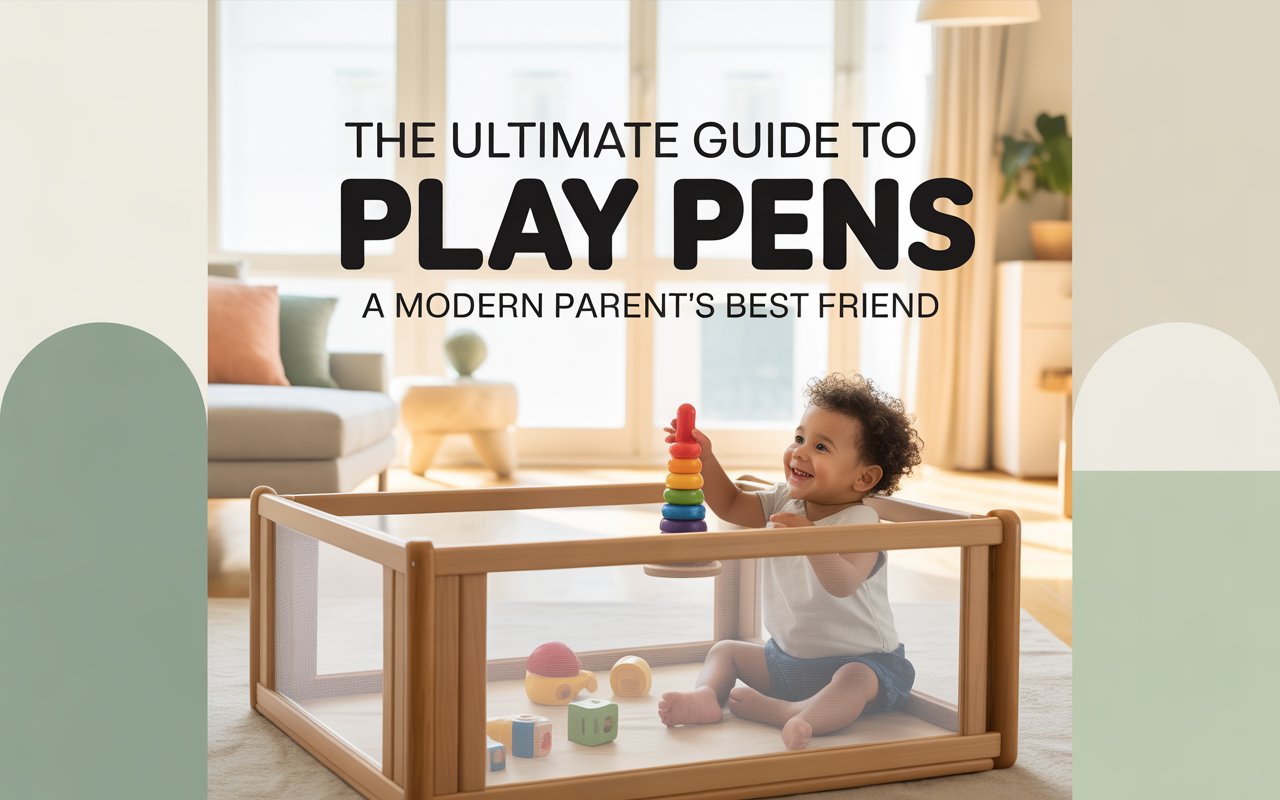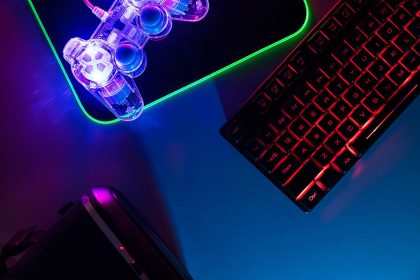If you’ve ever watched a toddler discover the world, you know it’s like observing a tiny explorer on a mission. They touch everything, climb everywhere, and somehow manage to find danger even in the safest-looking spaces. That’s where a play pen comes in—your silent, sturdy partner in keeping your little ones safe while giving you a moment to breathe.
In this long-form guide, we’ll walk through everything you need to know: the types, the materials, safety features, benefits, setup tips, and even how to choose the right one for your home. Think of this as a friendly, all-in-one resource created just for you, the modern caregiver.
What Is a Play Pen?
A play pen is a secure, enclosed space designed for babies and toddlers to play, rest, or explore safely. It’s like giving your child their own private “mini world,” where they can crawl, roll, or play with their toys without parents constantly worrying about sharp corners, stairs, or breakable objects.
Why It’s More Relevant Today
With busy lifestyles, multitasking, and smaller living spaces, parents need tools that make childcare safer and more manageable. A play pen takes the pressure off by offering a controlled environment without limiting a child’s natural curiosity.
The Evolution of the Play Pen
You might remember older, wooden play pens from decades ago. Today’s versions have transformed into lightweight, foldable, cushioned, travel-friendly designs with modern safety standards.
From Old to New
-
Past: Hard wood or metal frames
-
Present: Mesh walls, padded bases, non-toxic plastics
-
Trend: Smart pens with sensors and interactive panels
It’s amazing to see how something so simple has evolved to match the needs of today’s families.
Key Benefits of Using a Play Pen

If you’re wondering whether a play pen is worth it, the answer is usually “yes”—as long as you know how to use it correctly.
1. A Safe Zone for Active Babies
Babies don’t sit still. A play pen keeps them contained without feeling restrictive. They can move freely, but within a boundary that keeps them out of harm’s way.
2. Gives Parents a Much-Needed Break
Imagine trying to cook, fold laundry, or take an important call while your toddler crawls toward the dog bowl. A play pen lets you multitask with peace of mind.
3. Encourages Independent Play
Children learn valuable skills like focus, creativity, and problem-solving when they explore independently.
4. Portable for Travel
Many modern options fold like a suitcase, making them perfect for:
-
Hotel stays
-
Visiting relatives
-
Outdoor picnics
5. Perfect for Both Indoor and Outdoor Use
Some models are waterproof and weather-friendly, making them ideal for backyards, beaches, and parks.
Types of Play Pens
Not all play pens are the same. Understanding the types can help you decide which one fits your lifestyle best.
1. Traditional Play Pens
These are usually square or rectangular, sturdy, and designed for indoor use. They offer a classic, no-fuss solution.
2. Foldable Travel Play Pens
With lightweight frames and collapsible structures, these are great for parents on the go.
3. Activity or Learning Play Pens
These come with fun built-in features like:
-
Rattles
-
Mirrors
-
Soft blocks
-
Sensory boards
They keep kids entertained while supporting learning.
4. Large-Panel Play Areas
These can be shaped into circles, squares, or custom layouts, giving toddlers more room to explore. Great for older babies or shared play areas.
5. Outdoor Play Pens
Made with durable, weather-resistant fabric, these are ideal for gardens and beaches.
What to Look For When Choosing a Play Pen
Before buying one, consider these important factors:
1. Safety Certifications
Check for:
-
Smooth edges
-
Non-toxic materials
-
Secure locks
-
Stable structure
2. Breathable Materials
Mesh walls provide airflow and visibility, so you can always keep an eye on your child.
3. Size & Space
Think about your home layout. Do you need a compact option or a spacious one?
4. Portability
If you travel often or move rooms frequently, choose a lightweight, foldable model.
5. Easy Cleaning
Babies can turn anything into a mess. Removable, washable covers are a blessing.
6. Height & Stability
Ensure the walls are tall enough so your child can’t climb out easily.
Safety Tips Every Parent Should Know

A play pen enhances safety, but using it incorrectly can reduce its effectiveness. Here are must-follow tips:
1. Always Supervise
A play pen helps manage safety, but it’s not a substitute for adult supervision.
2. Regularly Check for Wear and Tear
Loose screws, broken zippers, or torn mesh must be fixed immediately.
3. Avoid Overcrowding
Too many toys can become tripping hazards.
4. Place It on a Flat Surface
An uneven floor can cause wobbling or tipping.
5. Keep It Away from Windows
Cords and curtains can become dangerous if pulled.
How to Set Up a Play Pen Correctly
Setting one up isn’t complicated, but a few steps ensure your child’s comfort and safety.
Step 1: Choose the Right Spot
Pick a bright area where you can see your baby easily.
Step 2: Add a Comfortable Base
Use padded mats or soft blankets—but avoid anything too fluffy.
Step 3: Include Stimulating Toys
Add age-appropriate toys that encourage movement and curiosity.
Step 4: Adjust to Your Child’s Growth
As your baby gets older, rotate toys or widen the space if possible.
Creative Ways to Use a Play Pen
A play pen isn’t just a containment tool—it can become a fun, interactive world.
1. A Mini Reading Nook
Add soft books, fabric pillows, and a cozy mat.
2. Sensory Play Corner
Use safe items like silicone shapes, textured cloths, or rattles.
3. Outdoor Adventure Zone
Take it outside and add sun-safe toys or splash-friendly items.
4. Playdate Boundary
When two toddlers play together, a play pen helps keep things calm and structured.
5. Evening Wind-Down Area
Dim the lights, add calm toys, and let your child relax before bedtime.
Common Mistakes Parents Make

Even the best tools can become ineffective when misused. Here’s what to avoid:
1. Using It for Too Long
Prolonged confinement can reduce movement and exploration.
2. Choosing the Wrong Size
A cramped area can frustrate active toddlers.
3. Ignoring Weight Limits
Every model has guidelines—follow them strictly.
4. Overlooking Locking Mechanisms
Loose latches can cause accidents.
5. Not Introducing It Gradually
Some babies may resist at first; make it feel familiar.
Play Pens vs. Play Yards: Are They the Same?
Many parents use the terms interchangeably, but there’s a slight difference.
Play Pens
-
Typically smaller
-
Focus on safe containment
Play Yards
-
Larger
-
More feature-rich
-
Often used for naps, travel, or extended play
Think of it like comparing a studio apartment to a one-bedroom—similar idea, different scale.
How Long Should Kids Use a Play Pen?
Age guidelines vary, but most children use them from 6 months to 2 years, depending on mobility.
When to Stop?
Once your child learns to climb out, it’s time to retire the play pen or transition to a larger play area.
Final Thoughts
A play pen isn’t just a piece of baby gear—it’s a smart parenting tool that offers safety, comfort, and peace of mind. It gives children room to explore while giving adults the freedom to manage everyday tasks. When chosen and used correctly, it becomes a beloved part of your parenting journey.
Whether you’re a first-time parent, caregiver, or someone looking for a gift, understanding the purpose and proper use of a play pen will help you make the best choice for your family.
FAQs
1. At what age should a baby start using a play pen?
Most babies can start using one at around six months, once they can sit up and explore safely.
2. Is it safe for babies to sleep in a play pen?
Short naps are fine, but it shouldn’t replace a crib for overnight sleeping.
3. Can play pens be used outdoors?
Yes! Many modern designs are weather-friendly and easy to set up outside.
4. How long can a child stay in a play pen at once?
Short, supervised sessions are best—about 20–40 minutes depending on age and activity.
5. Do play pens help with independent play?
Absolutely. They create a secure and familiar space where children can explore without constant interruptions.













